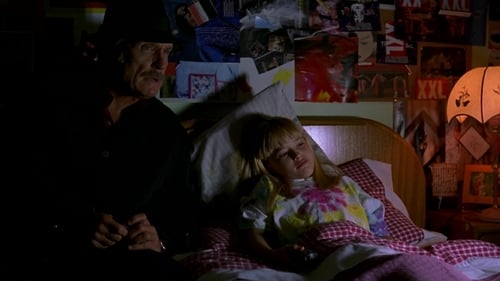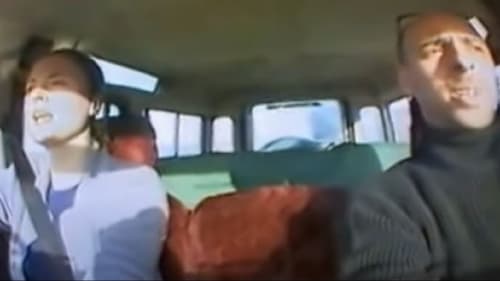
Producer
In Camouflage, writer Félix Bruzzone embodies a runner who has an obsession with Campo de Mayo, the biggest military unit in Argentina. It is also the place where his mother disappeared in 1976 and the main clandestine center of detention, torture and extermination during the last dictatorship. The film will follow Félix as he finds characters that allow him to enter and explore this place so loaded with history.

Script
In Camouflage, writer Félix Bruzzone embodies a runner who has an obsession with Campo de Mayo, the biggest military unit in Argentina. It is also the place where his mother disappeared in 1976 and the main clandestine center of detention, torture and extermination during the last dictatorship. The film will follow Félix as he finds characters that allow him to enter and explore this place so loaded with history.

Director
In Camouflage, writer Félix Bruzzone embodies a runner who has an obsession with Campo de Mayo, the biggest military unit in Argentina. It is also the place where his mother disappeared in 1976 and the main clandestine center of detention, torture and extermination during the last dictatorship. The film will follow Félix as he finds characters that allow him to enter and explore this place so loaded with history.

Weapon Designer / Cosmologist
An archaeologist and a weapons designer, who knew each other in a previous life as a filmmaker and a psychoanalyst, meet at an excavation site in the Negev desert and begin a conversation about love and war, which they continue in the Israeli city of Be’er Sheva. A series of encounters with alternating actors in different roles ensues, which leads the viewer through the cities of Athens, Berlin, Hong Kong and São Paulo. Among those appearing are: an old artist who meets his younger self; a mother who lives with her two grown-up sons, a priest and a policeman; a Chinese and a Japanese woman; a curator and a cosmologist.

self
Images of Argentinian companies and factories in the first light of day, seen from the inside of a car, while the director reads out documents in voiceover that reveals the collusion of the same concerns in the military dictatorship’s terror.

Sound
Images of Argentinian companies and factories in the first light of day, seen from the inside of a car, while the director reads out documents in voiceover that reveals the collusion of the same concerns in the military dictatorship’s terror.

Director of Photography
Images of Argentinian companies and factories in the first light of day, seen from the inside of a car, while the director reads out documents in voiceover that reveals the collusion of the same concerns in the military dictatorship’s terror.

Editor
Images of Argentinian companies and factories in the first light of day, seen from the inside of a car, while the director reads out documents in voiceover that reveals the collusion of the same concerns in the military dictatorship’s terror.

Writer
Images of Argentinian companies and factories in the first light of day, seen from the inside of a car, while the director reads out documents in voiceover that reveals the collusion of the same concerns in the military dictatorship’s terror.

Director
Images of Argentinian companies and factories in the first light of day, seen from the inside of a car, while the director reads out documents in voiceover that reveals the collusion of the same concerns in the military dictatorship’s terror.
![Streetscapes [Dialogue]](https://moviedb.kr/index.php/image/w500/2K1nI3Uz37m9o6GbxIIj6FJPb5y.jpg)
A film director confides in his interlocutor. He talks about the working process, about creative blocks, about artistic crises and expressive forces. At some point, the idea takes hold that this conversation could be turned into a film. And this is the very film we’re watching the two of them in.

Director
Adolfo Scilingo was the only military officer to confess the crimes of the dictatorship that ruled Argentina from 1976 to 1983. Among the genocide practices described were the death flights -- the dropping of tortured living prisoners into the Río de la Plata or the Atlantic Ocean. Scilingo specifies the model that was used in the flights he participated in: an Electra. Of the eight Electras belonging to the Argentine Navy, only the three bought in 1973 could have been used in the flights that Scilingo describes. Those planes are at present in Argentina. This film searches cartographically the traces of those planes.

Writer
From toponymy, a branch of linguistics, to politics, the links can be quite unexpected. These are which are sought to be revealed in the new fi lm by Jonathan Perel who uses his filmwork as a tool to explore and accurately document the marks left by previous dictators of Argentina. We are in the province of Tucuman, in the north of Argentina, an emblematic region where the fi rst Act of Independence in South America was signed in 1816 and where the “Operation Independence” took place in 1974, during which the guerillas’ insurgence was violently repressed.

Director
From toponymy, a branch of linguistics, to politics, the links can be quite unexpected. These are which are sought to be revealed in the new fi lm by Jonathan Perel who uses his filmwork as a tool to explore and accurately document the marks left by previous dictators of Argentina. We are in the province of Tucuman, in the north of Argentina, an emblematic region where the fi rst Act of Independence in South America was signed in 1816 and where the “Operation Independence” took place in 1974, during which the guerillas’ insurgence was violently repressed.

Director
Seventeen tripod-bound shots of fixed length observe the diverse and disparate settings in which 17 monuments, each bearing the words 'Memory', 'Truth' and 'Justice', were built by law to mark locations used as detention and torture centres during Argentina's military dictatorship between 1976 and 1983.

Director
Graffiti in the former clandestine centres for detention, torture and extermination, El Olimpo and Automotores Orletti, in Buenos Aires, Argentina.

Director
In and around the Escuela de Mecánica de la Armada (ESMA), the Navy Mechanics School, a former clandestine centre for detention, torture and extermination in Buenos Aires from 1976 to 1983.

Director
The attempt to accompany the creative process (with the inevitable difficulties and silences) of five women-dancers-choreographers, in their experience of creating a work of dance theater.

Production Manager
John J. is a seasoned hit man sent on a job to Argentina. When the General he's sent to kill delays his return to the country, John passes the time with Manuela, a beautiful dancer who becomes his teacher and guide into Argentina's sensual world of the tango.

Executive Producer
Fabián, a magician from Buenos Aires, saves his money from weddings, birthdays, and bar mitzvahs, and uses a hidden camera to document a week-long trip to the Falkland Islands where he has a patriotic plan: to impregnate a British woman. If 500 Argies do this annually, the islands will soon be overrun with children belonging to both cultures. He spends his first couple of days in Stanley doing reconnaissance, setting his sights on Camila, whom he's first seen in church. He chats her up at an Internet café. They go out for drinks, then dinner, then to the see the King penguins and a 1982 battlefield. Back home, editing his Dogma 95 film, he receives a final message from Camila.










![Streetscapes [Dialogue]](https://moviedb.kr/index.php/image/w500/2K1nI3Uz37m9o6GbxIIj6FJPb5y.jpg)








